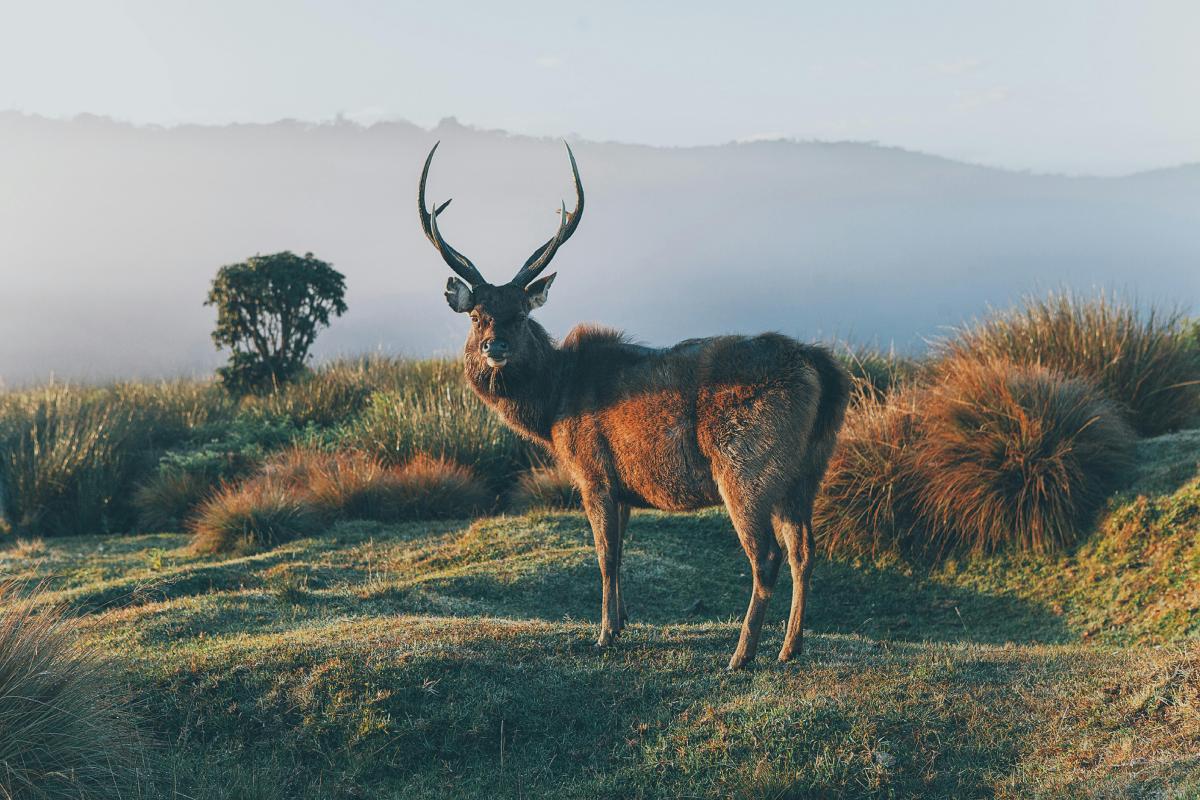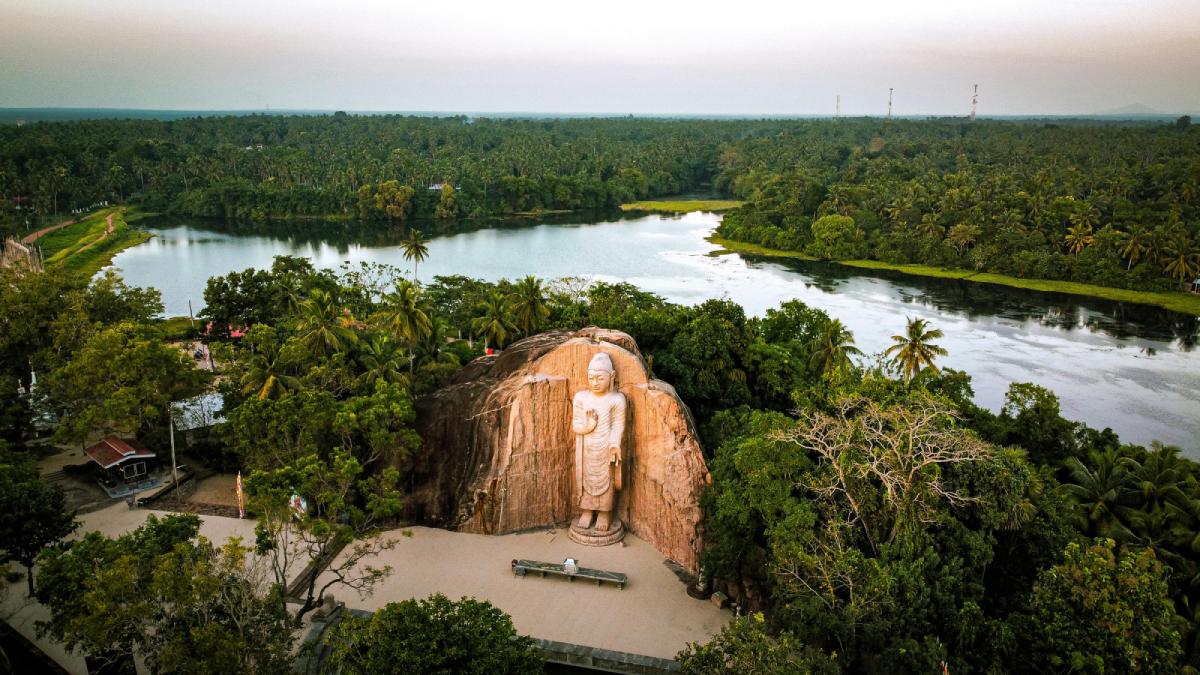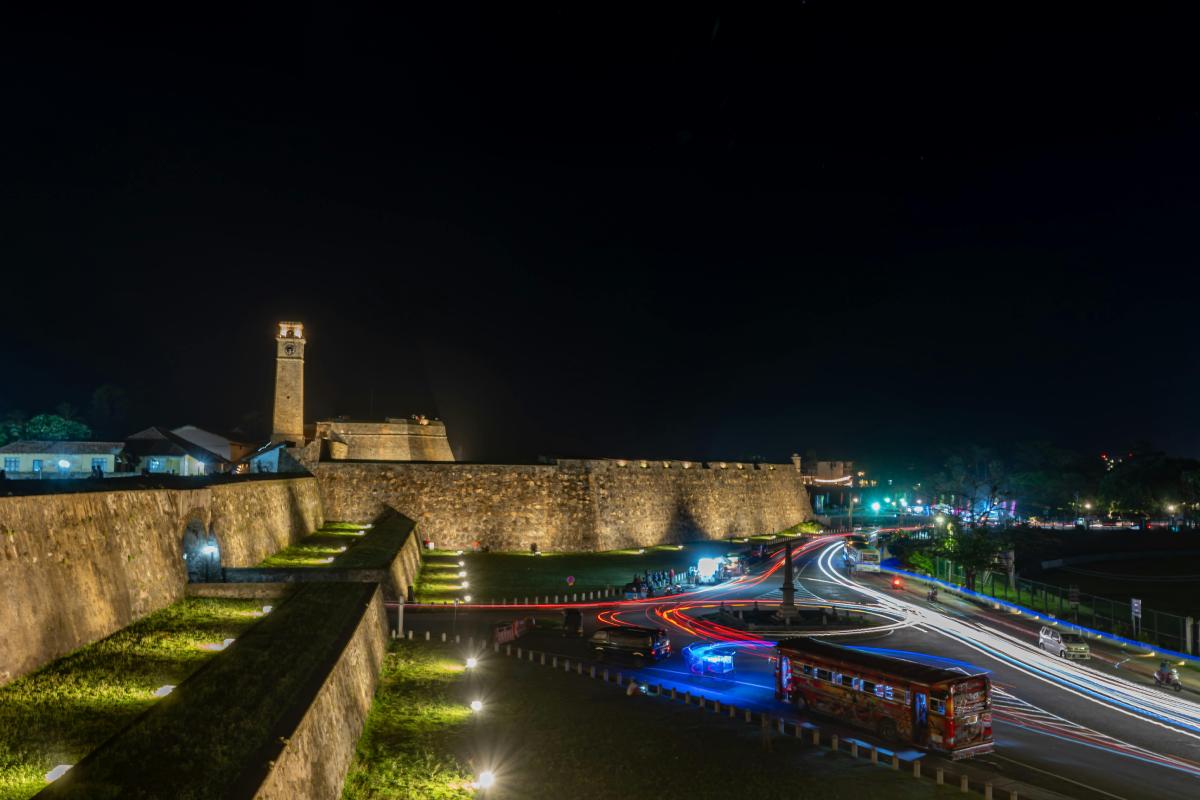Horton Plains National Park stands as one of Sri Lanka‘s most remarkable natural treasures, a misty highland plateau that captivates visitors with its unique biodiversity, striking landscapes, and cultural significance. This UNESCO World Heritage Site offers a glimpse into a pristine ecosystem unlike any other on the island. Let’s explore what makes this highland wilderness so special and why it should be on every nature lover’s travel itinerary.
Horton Plains National Park in Sri Lanka
Geographic Location and Formation
Situated in the central highlands of Sri Lanka, Horton Plains National Park lies at an elevation between 2,100 to 2,300 meters (6,900 to 7,500 feet) above sea level. The park covers approximately 31 square kilometers (12 square miles) of highland plateau, nestled between the peaks of Kirigalpotta (second highest mountain in Sri Lanka) and Thotupola Kanda (third highest).
The formation of this unique ecosystem dates back millions of years. Geologically, the plains represent an erosional surface that developed during the Miocene era. The underlying rocks are predominantly metamorphic, formed under intense pressure and heat. Over time, the interaction of these geological processes with climate and vegetation created the distinctive landscape we see today.

Climate and Ecosystem
The climate of Horton Plains is characterized as montane, with temperatures ranging from cool to cold. Average temperatures hover between 13°C (55°F) and 15°C (59°F), occasionally dropping to near-freezing during the night. Annual rainfall is substantial, averaging around 2,500mm, with most precipitation occurring during the southwest monsoon (May to September) and the northeast monsoon (December to February).
This unique climate has fostered the development of a montane grassland ecosystem interspersed with patches of cloud forest. The grasslands, locally known as “patana,” consist primarily of tussock grasses that have adapted to the harsh conditions. The cloud forests, or “pygmy forests,” feature stunted trees covered in moss and lichens, creating an otherworldly atmosphere, especially when shrouded in mist.
Biodiversity and Conservation
Horton Plains serves as a biodiversity hotspot and a crucial watershed area for Sri Lanka. Despite its relatively small size, the park harbors an impressive array of flora and fauna, many of which are endemic to the region.
Flora
Over 750 plant species have been documented within the park boundaries, representing approximately 25% of Sri Lanka’s endemic flora. Notable plant species include:
- Rhododendron arboreum (tree rhododendron), which produces stunning crimson blooms
- Calophyllum walkeri (keena), an endemic tree species
- Various orchid species, including rare ground orchids
- Dwarf bamboo (Arundinaria densifolia), which carpets large areas of the grasslands
- Various mosses, lichens, and epiphytes that create the distinctive appearance of the cloud forests
Fauna
The park’s fauna is equally impressive, with over 24 species of mammals, 87 bird species, 9 amphibian species, and numerous reptiles and invertebrates.
Mammals include:
- The endangered Sri Lankan sambar deer
- Purple-faced langur (a primate endemic to Sri Lanka)
- Sri Lankan leopard (though rarely sighted)
- Wild boar
- Fishing cat
- Otter species
Bird enthusiasts will appreciate the presence of:
- Sri Lanka white-eye
- Dull-blue flycatcher
- Yellow-eared bulbul
- Sri Lanka bush warbler
- Many migratory species during certain seasons
Several amphibian species found here are critically endangered and endemic to the highlands, including the horned frog and the wrinkled frog.
Major Attractions
World’s End
Perhaps the most famous attraction within Horton Plains is “World’s End,” a sheer cliff with a drop of about 880 meters (2,890 feet). This dramatic escarpment offers breathtaking panoramic views of the surrounding countryside, extending as far as the southern coastline on clear days. The visual impact of standing at World’s End is unforgettable—the landscape seems to simply fall away beneath your feet, creating a sensation of being at the edge of the world.
Baker’s Falls
Named after the British explorer Sir Samuel Baker, Baker’s Falls is a picturesque waterfall that plunges approximately 20 meters (66 feet) down a series of rock steps. The surrounding area is lush with vegetation and provides an ideal habitat for various amphibians and birds. The rhythmic sound of cascading water amid the silent expanse of the plains creates a tranquil oasis that many visitors find meditative.
Mini World’s End
A less dramatic but equally beautiful viewpoint, Mini World’s End offers another perspective of the escarpment with a drop of about 300 meters (984 feet). It’s often less crowded than the main World’s End, making it perfect for those seeking a more solitary communion with nature.
Historical Significance
The plains were named after Sir Robert Wilmot-Horton, who served as the British governor of Ceylon (now Sri Lanka) from 1831 to 1837. However, the area’s history stretches far beyond colonial times.
Archaeological evidence suggests human presence in the vicinity dating back to the Balangoda culture (approximately 6,500 BCE). Stone tools and other artifacts have been discovered, indicating that prehistoric humans utilized the resources of the area.
In more recent history, the plains served as hunting grounds for the British colonials, who particularly targeted sambar deer and other wildlife. This practice continued until 1969, when the area was designated as a nature reserve. In 1988, it was elevated to national park status, reflecting its ecological importance.
Cultural Significance
Horton Plains holds cultural significance for Sri Lankans, particularly in local folklore and religious narratives. According to some legends, the area is associated with Ravana, the mythical king from the Hindu epic Ramayana. Some believe that Ravana’s kingdom, Lanka, was situated in these highlands.
The indigenous Vedda people, Sri Lanka’s aboriginal inhabitants, also have historical connections to the area, with oral traditions suggesting the plains were once part of their hunting grounds.
Best Time to Visit
The optimal time to visit Horton Plains is during the dry season from January to March. During these months, the skies are clearer, especially in the morning, offering the best chance to enjoy the spectacular views from World’s End without the obstruction of mist or clouds.
Most visitors arrive early in the morning (between 6:00 AM and 10:00 AM) to maximize their chances of clear views before the afternoon mist rolls in. By midday, clouds typically obscure the vistas, significantly diminishing the experience at World’s End.
Practical Information for Visitors
Access and Transportation
The most common gateway to Horton Plains is the town of Nuwara Eliya, approximately 32 kilometers (20 miles) away. From Nuwara Eliya, visitors can arrange transportation to the park entrance. Many tourists also access the park from Ohiya or Pattipola.
Public transportation options are limited, so most visitors arrange for private transportation or join organized tours. Some adventurous travelers opt to arrive via the scenic train route to Ohiya station, followed by a tuk-tuk ride to the park entrance.
Entry Requirements and Fees
Foreign visitors must pay an entrance fee, which includes a conservation levy. The fee structure is tiered based on nationality, with different rates for SAARC country nationals and non-SAARC visitors. Additionally, there are camera fees for those wishing to photograph within the park.
The park is open daily from 6:00 AM to 6:00 PM, though most visitors arrive early to catch the morning views.
Trekking and Trails
The main trail within Horton Plains forms a loop of approximately 9.5 kilometers (5.9 miles), taking visitors to all the major attractions including World’s End and Baker’s Falls. The trek typically takes about 3-4 hours to complete, depending on one’s pace and how long one spends at each viewpoint.
The terrain is relatively flat with some gentle inclines, making it accessible to most reasonably fit visitors. However, proper footwear is essential as parts of the trail can be muddy, especially after rain.
Environmental Considerations
Visitors are strictly prohibited from:
- Leaving the designated paths
- Collecting plants or disturbing wildlife
- Using plastic bags or containers (banned to protect the environment)
- Smoking or lighting fires
- Making excessive noise that might disturb wildlife
These regulations are rigorously enforced to preserve the delicate ecosystem.
Conservation Challenges
Despite its protected status, Horton Plains faces several conservation challenges:
Climate Change
Rising temperatures and changing rainfall patterns threaten the delicate balance of the montane ecosystem. Some endemic species have narrow temperature tolerances and may struggle to adapt to a warming climate.
Invasive Species
Exotic plant species like gorse (Ulex europaeus) have invaded parts of the plains, outcompeting native vegetation and altering the habitat structure.
Die-back Phenomenon
A concerning “die-back” phenomenon has been observed in some forest patches, where trees mysteriously begin to wither and die. Research suggests this may be linked to soil acidification from acid rain, possibly exacerbated by climatic changes.
Tourism Impact
While tourism brings economic benefits and raises awareness about conservation, the increasing number of visitors also places pressure on the fragile ecosystem. Soil erosion along popular trails, improper waste disposal, and disturbance to wildlife are ongoing concerns.
Conservation Efforts
Various initiatives are underway to address these challenges:
- Regular monitoring of key species and habitat conditions
- Restoration projects to control invasive species
- Research programs to understand and mitigate the die-back phenomenon
- Educational programs for visitors to promote responsible tourism
- Community involvement in conservation activities, including buffer zone management
Conclusion
Horton Plains National Park represents a unique confluence of geological formations, climatic conditions, and evolutionary processes that have created an ecosystem of remarkable biodiversity and scenic beauty. From the dramatic precipice of World’s End to the delicate orchids hidden in the cloud forest, the park offers visitors an opportunity to experience one of Sri Lanka’s most precious natural landscapes.
As climate change and human activities continue to threaten montane ecosystems worldwide, the conservation of places like Horton Plains becomes increasingly vital. By visiting responsibly and supporting conservation efforts, travelers can contribute to the preservation of this highland wilderness for future generations.
Whether you’re a nature enthusiast, a photographer, a bird watcher, or simply someone seeking a peaceful escape into a misty mountain realm, Horton Plains National Park offers an experience that connects visitors to the ancient natural heritage of Sri Lanka’s central highlands. It stands as a testament to the need for balancing human enjoyment of natural wonders with their careful protection and preservation.


